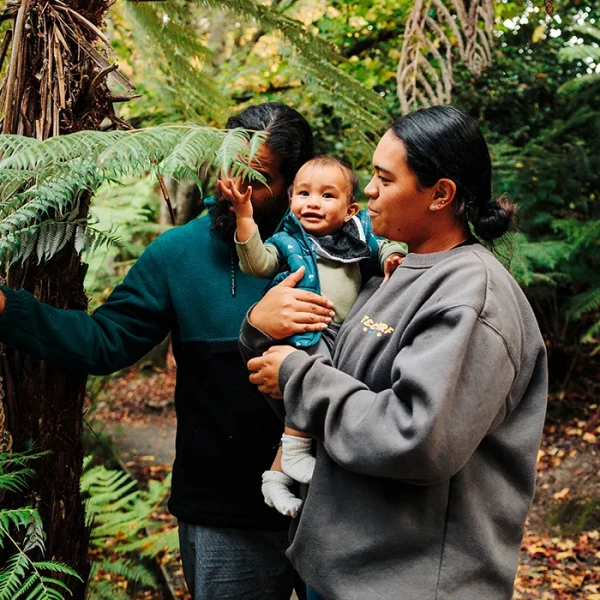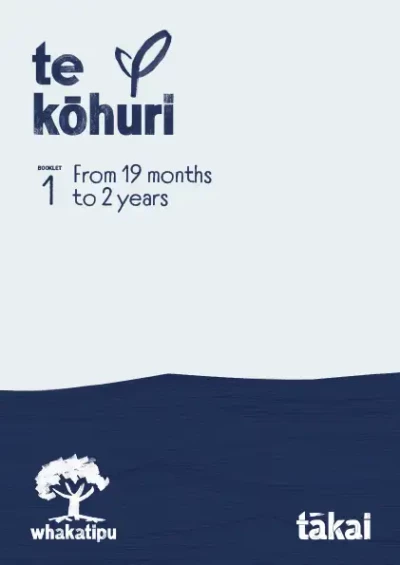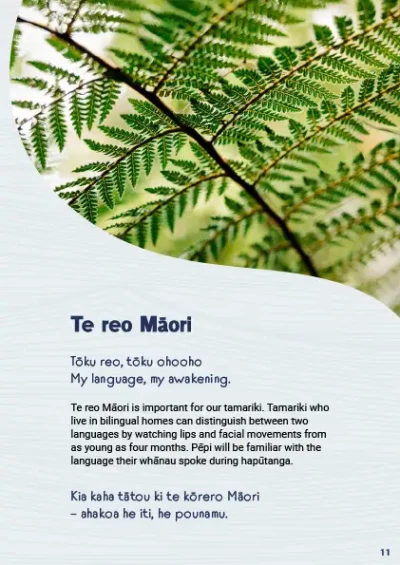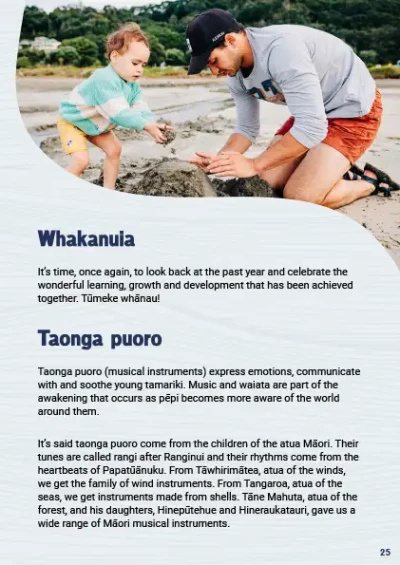
Te reo rangatira
It is a gift to speak more than 1 language. When whānau speak te reo Māori to their pēpi, even if it’s just a little, pēpi learns the natural rhythms, sounds and speech patterns of their language and culture.
On this page

Tōku reo, tōku ohooho
For an individual pēpi it can refer to the way they learn about their world through their senses – including hearing. As their senses develop, so their horizons expand.
Sounds and rhythms
Te reo Māori is important for our tamariki. Tamariki who live in bilingual homes can distinguish between 2 languages by watching lips and facial movements from as young as 4 months. Pēpi will be familiar with the language their māmā spoke during hapūtanga.
Pēpi learns language through their daily interactions with close whānau members. When whānau speak te reo, pēpi learns the natural rhythms, sounds and speech patterns of te reo. At the same time, pēpi learns the culture, because te reo Māori is embedded in the culture.
Learning together
Having children is often a motivator for whānau who are not speakers of te reo Māori themselves to start to learn and make it part of their family’s world. Other whānau may need encouragement to see the value for their pēpi of being bilingual.
A starting place may be learning simple phrases to use during everyday interactions with their pēpi. There are a lot of free online resources to support them whatever level they are at.
Talk with whānau about having two languages in their home, particularly if they want to use te reo Māori with their pēpi. We can all be encouraged by the thought that te reo is a gift. We don’t have to be fluent speakers to be able to pass on that gift. Even if we only speak a little reo, it’s still precious – it’s still important.
Kia kaha tātou ki te kōrero Māori!
Ahakoa he iti, he pounamu.
Music and waiata
Taonga pūoro (musical instruments) express emotions, communicate with and soothe young tamariki. Music and waiata are part of the ‘awakening’ that occurs as pēpi becomes more aware of the people and the world around them.
It is said taonga pūoro come from the children of the atua Māori. Their tunes are called rangi after Ranginui and rhythms come from the heartbeats of Papatūānuku.
From Tāwhirimātea , atua of the winds, we get the family of wind instruments. From Tangaroa , atua of the seas, we get instruments made from shells. Tāne Māhuta , atua of the forest, and his daughters, Hinepūtehue and Hineraukatauri, gave us a wide range of Māori musical instruments.
Conversation ideas
Learn more
Tōku reo
Tokureo.maori.nz
Video, interactive exercises, podcasts for the Māori Television show Tōku Reo.
Being bilingual: learning two languages
Brainwave Trust
Article about learning to speak 2 languages, how this affects the brain, and the benefits for children and whānau.
Māori musical concepts
Te Ara
Information about the whakapapa of taonga puoro, their descent from ngā atua and the many forms of traditional music and instruments.
Is it ever too early to start learning te reo Māori?
Talking Matters
PDF (466KB) with ideas on how to use te reo Māori with pēpi at different stages as they grow.
 pdf 10 MB
pdf 10 MB













